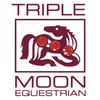Why Horses Kiss

Why Horses Kiss
Understanding the Meaning Behind a Horse’s Most Adorable Gesture
If you’ve ever watched two horses stand face to face, muzzles touching and squished, lips to lips, eyes soft and still—you might’ve caught yourself wondering: Are they kissing?
It’s a moment so gentle, so filled with presence, it can stop you in your tracks. But this isn’t just a sweet habit or a fluke of behavior—it’s something much deeper.
In the world of horse behavior and body language, this quiet “kiss” reveals an incredible glimpse into how horses bond, communicate, and express trust.
What Does It Mean When Horses Touch Noses?
When two horses stand quietly, nose to nose, they’re engaging in a behavior known as affiliative bonding. It’s a gesture of connection, trust, and often, mutual comfort.
For prey animals like horses, putting their face close to another is a big deal. They don’t do it casually. It’s their way of saying:
“I’m safe with you.”
This isn’t dominance. It’s not a challenge. It’s friendship.
The Power of Breath and Energy
Horses use their breath as part of how they communicate and feel each other out. Standing nose-to-nose allows them to:
- Share scent (which carries emotional and hormonal information)
- Feel each other’s breathing patterns
- Calm and co-regulate their nervous systems
Some researchers believe horses can actually sync heart rates and lower stress together through this kind of quiet proximity. For bonded pairs—or horses recovering from trauma—this contact can be deeply soothing.
When Do Horses Do This?
You’re most likely to spot this “kissing” behavior between:
Best friend pairs in the herd
- A mare and her foal
- Two geldings who’ve become companions
- A horse and a human they feel safe with
It’s a moment of checking in. Of offering presence without pressure. Of saying “I’m with you.” I've personally seen this on a regular basis with our beautiful mare, Claire. She knows just how to settle Dot down when he's disregulated.
What We Can Learn From This
As humans, we often overlook the quiet. But horses teach us that presence can be the loudest form of love. There’s no agenda in these moments—just being. Just breathing.
If your horse greets you with a soft nose to your face or leans in to share breath, know this:
You’ve been accepted into a sacred space. That’s not training. That’s trust.
And if you see horses in your herd standing muzzle to muzzle, still and serene? That’s emotional safety made visible—and it means you’ve created a place where connection is safe to bloom.


Leave a comment